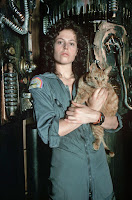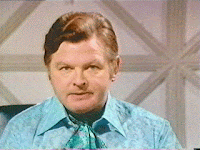Last week I mentioned an issue I’d seen pop up in the Saturday geekery movies once or thrice. This one also pops up a lot in B-movies, but I’ve seen it more than a few times in books as well. So I thought, hey, here’s another thing to talk about.
So let’s talk about cats and dogs and killing people.
Something I’ve brought up here once or thrice is saving the cat. It’s a screenwriting term, but I think it applies fairly well to all storytelling. Really simply put, it’s when a character does something simple that establishes they’re a good person. Or, at the least, a person we should be rooting for. It tends to come early in the story because saving the cat isn’t about changing our opinion of a character—it’s just about reinforcing it. If we thought they were pretty good… yeah, this just lets us know we had the right idea.
Not, the flipside of this is what I call patting the dog. I’ve talked about this before, too. This is when someone does an equally small, minor thing and it’s supposed to make us look at this character in a whole new light. Saving the cat is about reinforcing an opinion, patting the dog is about completely changing it. Because of this, patting the dog tends to come later in the story—we can’t have new thoughts about a character until we’ve had time to make old thoughts, right?
Now… I mention all that because I wanted to talk about killing supporting or background characters.
How many times in books or movies have we seen the person who stays behind to defuse the bomb? There’s no time and we’ve already admitted it’s next to impossible and everybody else is clear, but god damn it they can dothis. Or we know the wendigo is out there and it can mimic human speech and these are its prime hunting hours but god damn it what if that’s really a little kid in the woods? Or we’re sure the whole shelter’s been cleaned out and we can’t contain the fire any longer but god damn it Yakko’s heading back in to make sure we didn’t miss a cat in one of the cages…
And then, y’’know, they die. Doing something brave and noble. But also, like… really, really stupid.
When we see something like this, the storytellers are trying to up the stakes. They know it’s time for someone to die so the audience understands how real the danger/ threat is. But at the same time… I mean, we don’t want to kill one of our main characters, right? And it turns out we haven’t really developed any of our other characters past “Redhead #2” or “Soldier with Hat” so it won’t mean anything if they die.
Unlessssssssss…
What we’ve all probably tried once or twice is to make the way someone dies get the emotional response. So it’s not so much that we feel for them, it’s that the writer’s created a situation where we’d have an emotional response for anyone who died this way. This is really common in the torture porn subgenre, where it’s not so much about the character as it is what’s being done to the character. No matter who they are, no matter what they’ve done, you have to feel sorry for someone who gets that done to their… well, look, it’s uncomfortable just making this up.
And that’s what a lot of these fake “saving the cat” moments are trying to do. It’s not about creating a character who does something brave or noble or righteous—it’s about creating a situation where anyone would be brave or noble or righteous. If Thanos runs back into that burning building to make sure there weren’t any cats left behind, we’d still go “Wow… almost a complete monster, but at least he tried to save those hypothetical kittens. He didn’t deserve to die like that. Goddamn shame, that’s what it is.”
The big catch, of course, is that these situations still have to make logical sense with everything else going on in my story. Oh, and even a flat stereotype of a character has to behave in ways we understand human beings tend to behave. If “Soldier with Hat” suddenly starts disobeying direct orders, this isn’t a sudden burst of characterization—it’s just someone acting unnaturally. And if they’re doing this in an unnatural situation… well… I can’t be shocked if the whole thing comes across as fake.
To be clear, there’s nothing wrong with killing characters. I‘ve killed tons of people in my books. Main characters and supporting characters. I don’t know how many background folks who never got a name or more than a word or two of description.
But I have to be honest about the weight these deaths actually bring to my story. Killing “Soldier with Hat” shouldn’t seem inconsequential, but it also shouldn’t be the dramatic linchpin of an entire chapter. The wendigo getting Redhead #2 is bad, yeah, but we can’t pretend it’s as bad as if it got Phoebe. I can’t manipulate deaths into being important or make characters noble and brave after the fact.
If I want these deaths to matter—really matter, in a way that sticks with my readers—I need to actually care about the characters. If I don’t have any investment in them, if I don’t wantthem to survive, then it doesn’t matter if they survive.
And I’ll look kind of silly for insisting it does.
Next time, I’d like to explain why that guy really doesn’t represent me. Or you.
Until then, go write.






